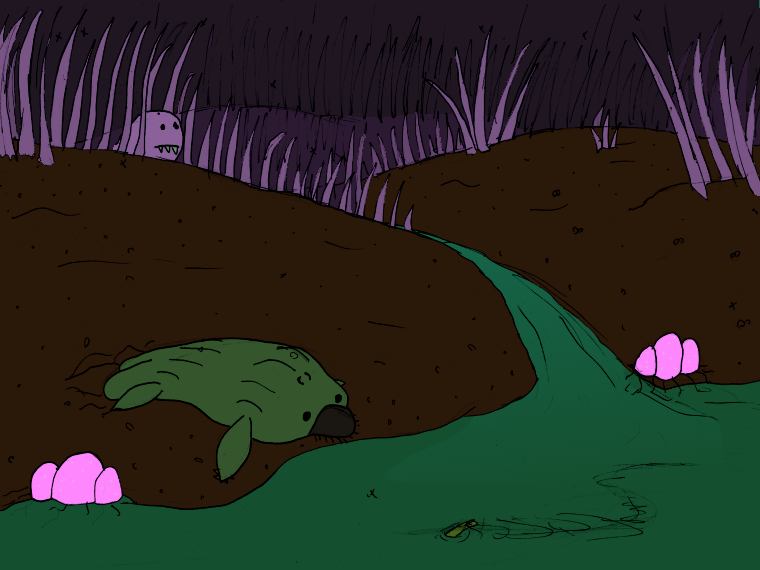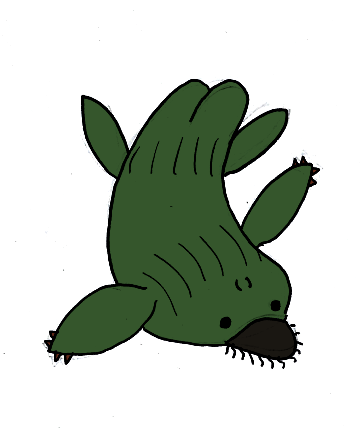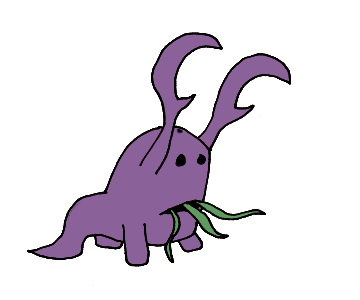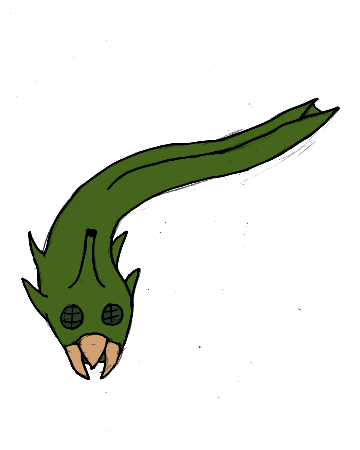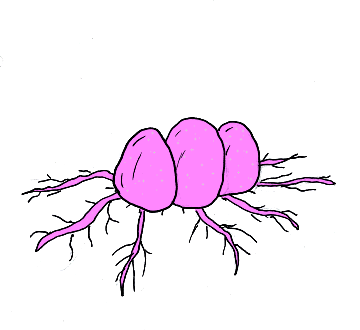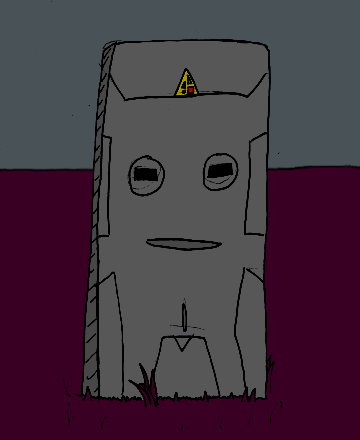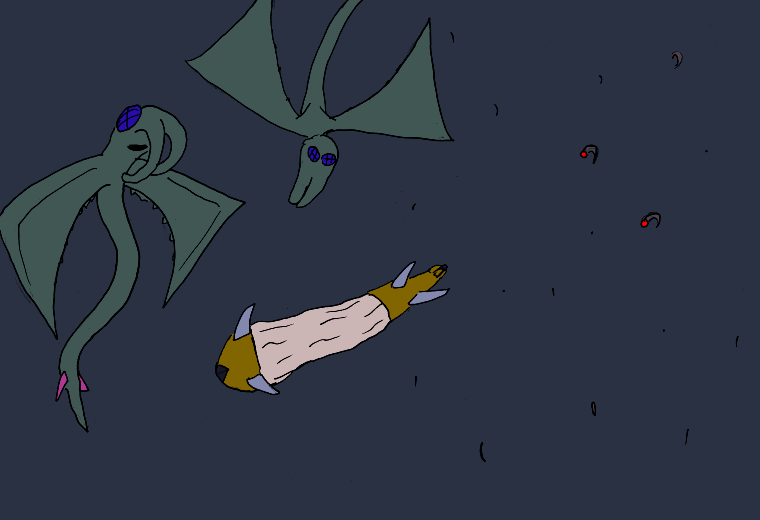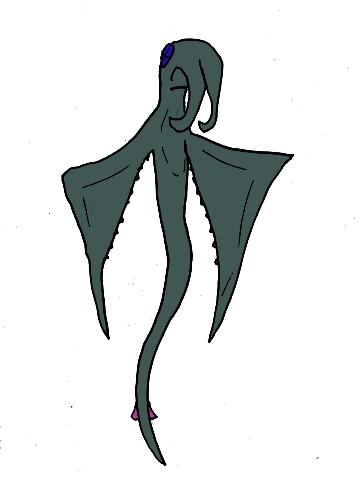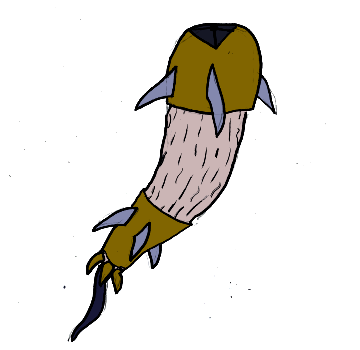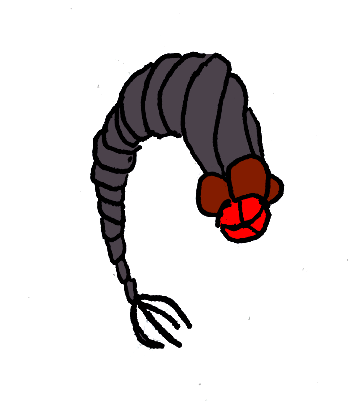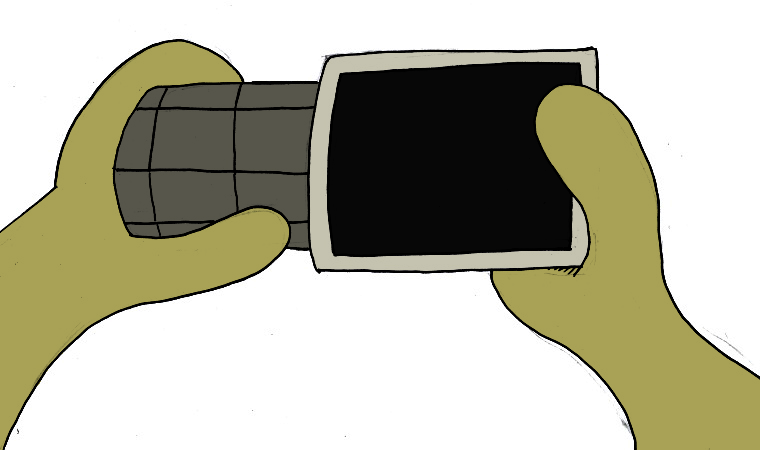Planet Gurx: Plants
At this point we’ve covered a lot of the animal life that can be found on planet Gurx, and we may have seen some of planet’s version of plantlife along the way, but we haven’t focused on it. Here’s where we remedy that:
Aataa
For the most part, the type of life forms that the Strondovarians classify as “Aataa” have roots that they use to anchor to soil, and extract nutrients and water, and many can use photosynthesis. They are as similar to the plants one would find on Earth as anything on Gurx.
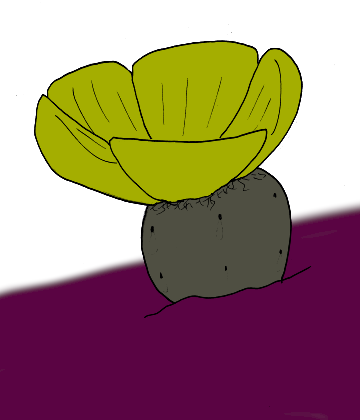
One of the most common kinds of Aataa on the planet are the Ovauep, which have petal-like leaves on top of a large bulb. In addition to taking in sunlight, the leaves will, when in the presence of moisture such as rain or dew, react by forming a sort of funnel to help the plant drink it all up through its top. The Ovauep uses this moisture to make a kind of “juice” that seeps out of its sides to attract animals who drink it. This juice contains the Gurxian equivalent of pollen, which can travel via the animals to mingle with other Ovauep and allow for reproduction.
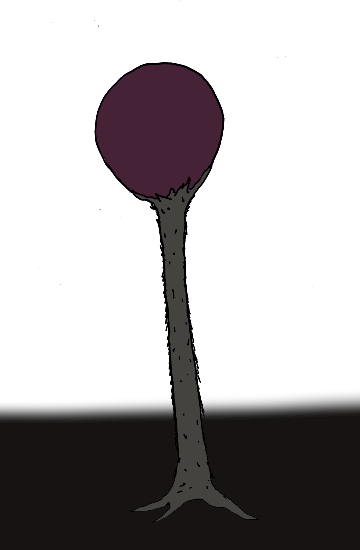
Found mostly in batches alongside rivers and streams, Aeklay are essentially straws that draw moisture from the wet soil to produce a fruitlike bulb that, when matured and pollinated, will dry up and blow away in the wind usually falling into the water that will wash it to some other wet soil where it can begin again.
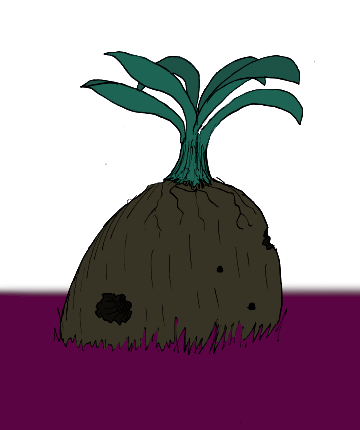
Similar to the Ovauep, the Aeossolay attract animals with the promise of a meal and will send them away with pollen. There are some differences in technique here, though: the meal of an Aeossolay is not juice, but a nut-like substance that is, by most accounts from Strondos, quite delicious. But don’t get too greedy, because if an animal digs in too deep (where the food is softer and easier to eat) while the plant is hungry, it can trigger the Aeossolay to release a chemical that will paralyze and digest the animal.
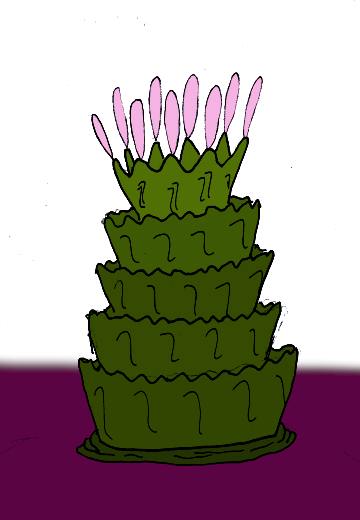
Considered beautiful by Strondovarian culture, the Aishiaro are an ancient form of Aataa that grows in a sort of layer-cake form. Each year, a new tier of the Aishiaro grows from the middle of the last, building up and up until the time comes for it to release a cloud of spores, which are followed by the beginning of next year’s tier.
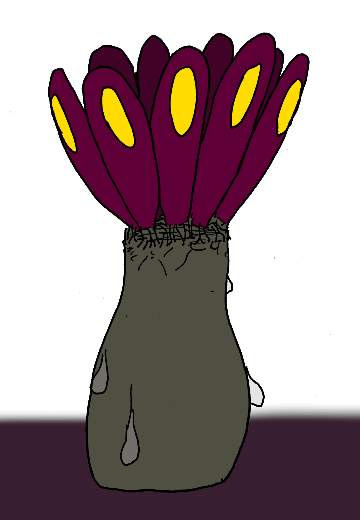
Located on the dark floors of the Gurxian forests, the Ooabbi are named something close to “blinkers” for the bioluminescent patterns they use to attract their prey. Like the Aeossolay, these are carnivorous Aataa, but they do it with poisonous pollen-juice that can drop a victim dead near-instantly when it comes into contact. Luckily for the Ooabbi there are some species of small Vootuph flying about the forest floors that love to scavenge and are immune to this poison, so these Aataa can still pollinate and reproduce effectively even as they pile up corpses around them.

